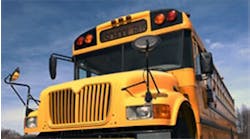Four years after one student fatally shot another in the hallway of a Madison, Ala., school, the town’s police chief is convinced that someone else in the school knew the shooter had a firearm that day.
Madison Police Department (MPD) Chief Larry Muncey said he later questioned the shooter about whether anyone else knew he was armed. The shooter responded that it was “quite possible that somebody saw a bulge in my front pocket,” according to Muncey.
“There’s no doubt they knew,” Muncey said during a session at the recent International Association of Chiefs of Police (IACP) Law Enforcement Information Management (LEIM) conference in Atlanta. “Somebody else in that school knew. One of his friends. One of his cohorts. Somebody saw something, something that was suspicious. But there was no way for those kids to communicate with us.”
MPD and the school district partnered to change that. In addition to hiring more school resource officers and improving building security, MPD implemented a simple, inexpensive solution that is known in Madison as “Text to Protect.”
“It became blatantly clear that the only way to stop a school shooting is to have some sort of intel prior to [when] the shooting occurs,” Muncey said.
Don Monk, law-enforcement technical coordinator with MPD, described the program as a “low-tech” solution. The department spent $9.75 to purchase two pieces of software: one that transmits texts via e-mail, and another that automatically confirms receipt of those e-mailed texts. Monk said the department chose this method because it wanted an inexpensive solution that could be deployed quickly.
“We’re just using what we already had. So far, we haven’t bought anything, except for two pieces of software from the Blackberry store,” Monk said. “You can do this with something else. We’ve played around with the idea of Google voice and Google mail. You can do it with an iPhone, whatever. This is just what we had.”
Once the text becomes an e-mail, it is sent simultaneously to the dispatch center, the police command staff and SROs. The dispatcher, who is the only recipient with the ability to respond to the text, then coordinates the proper response.
On average, about five or six text messages are received this way every week, but perhaps predictably, any incident is accompanied by a flurry of several dozen texts in a short period. The system can handle photos and videos, but as of April, dispatch had only received one video through Text to Protect, according to Muncey.
The program offers confidentiality but not anonymity, which Muncey says is important for success, because it allows the dispatcher—or later, the police—to ask follow-up questions, which discourages abuse. MPD decided to create its own solution because many of the options available in the market granted users anonymity, he said.
With MPD managing the system, the texts are received immediately and without oversight from school personnel (important since tips sometimes are related to school staff).
The program was launched shortly after the shooting four years ago, and Muncey said it is now part of the school culture in Madison. Elementary students are given Text-to-Protect wristbands, and older students are instructed to save the program’s phone number in their cellular device contact list on the first day of school. Previously, the school district had a telephone tip line that no one used, Muncey said.

